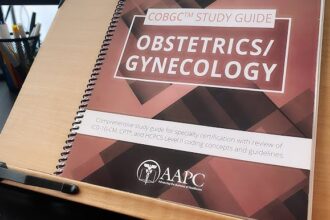Introduction to Stonewall penitentiary mouse lagsd
Welcome to the fascinating world of Stonewall Penitentiary, where history and intrigue intertwine. Nestled within its walls lies a unique story—one that revolves around an unlikely but significant figure, Mouse Lagsd. This tale ventures beyond mere incarceration; it explores resilience, reform, and the human spirit’s capacity for change amidst challenging circumstances.
As we delve into the depths of Stonewall Penitentiary’s rich past and Mouse Lagsd’s notable contributions, prepare to uncover how this extraordinary mouse not only shaped prison life but left a lasting impact on its operations. Join us as we navigate through historical milestones and personal stories that highlight both struggle and triumph within these storied confines. You’ll learn why this tale captures attention far beyond the prison gates!
Historical Background of Stonewall Penitentiary
Stonewall Penitentiary has a rich and complex history. Established in the late 19th century, it was designed to house an increasing number of offenders during a time when prison reform was gaining momentum.
Initially, the penitentiary reflected the ideals of rehabilitation rather than punishment. Early years were characterized by strict discipline and a focus on inmates’ moral improvement. The architecture mirrored these goals, featuring high ceilings and open spaces meant to inspire reflection.
As decades passed, notable events shaped its identity. Riots erupted over conditions, prompting changes in management strategies and inmate treatment protocols. Each transformation marked a shift not only for Stonewall but also influenced penal systems across the region.
This backdrop set the stage for significant developments within its walls that would resonate long after initial construction—a story intertwined with societal attitudes toward crime and justice.
Establishment and Early Years
Stonewall Penitentiary opened its doors in the late 19th century, designed to house an ever-growing population of offenders. The architecture was imposing, intended to instill both fear and discipline.
Initially, it served as a maximum-security facility. Early inmates faced strict routines that left little room for leniency. Each day revolved around labor-intensive tasks meant to promote rehabilitation through hard work.
The early years were marked by experimentation in prison management. Administrators sought methods that blended punishment with reform. They aimed to transform hardened criminals into productive citizens.
This period also witnessed significant challenges. Overcrowding became apparent almost immediately as crime rates surged. The combination of strict rules and limited resources set the stage for future reforms within the penitentiary system, shaping Stonewall’s legacy from its very inception.
Notable Events and Changes Over Time

Throughout its history, Stonewall Penitentiary has witnessed numerous notable events that shaped its reputation and operations. One significant incident occurred in the 1970s, when a major prison riot erupted over overcrowding and inadequate resources. This uprising highlighted the desperate conditions inmates faced.
The aftermath led to reforms aimed at improving living standards. New policies were introduced to address inmate welfare and enhance security measures.
Another pivotal moment came in the early 2000s with advancements in rehabilitation programs. These initiatives focused on education and skill development for inmates, moving away from purely punitive measures.
Changes continued into the recent decade as technology began playing a larger role in prison management. Surveillance systems improved safety while also introducing ethical debates surrounding privacy rights within penitentiaries.
These events reflect a shifting landscape at Stonewall, revealing an institution evolving alongside societal expectations and legal frameworks.
Mouse Lagsd: An Overview
Mouse Lagsd stands out as a significant figure associated with Stonewall Penitentiary. His journey within the prison system reflects broader issues of justice and reform.
Born into challenging circumstances, Mouse quickly became known for his resilience behind bars. His experiences shaped not only his identity but also influenced many around him.
Lagsd’s unique perspective on prison life offered insights that were often overlooked. He became an advocate for change, pushing against systemic flaws within incarceration practices.
His connection to Stonewall Penitentiary is pivotal. It was here that he made notable contributions, advocating for better living conditions and treatment of inmates.
Through struggles and triumphs, Mouse Lagsd carved out a legacy that resonates even today. His story remains an important chapter in understanding the evolution of penitentiaries in America.
Background and Significance
The Stonewall penitentiary mouse lagsd holds a unique place in history. It’s not just a creature; it’s an emblem of resilience and survival against the odds.
This little mouse became synonymous with life within the prison walls. It adapted to the harsh environment, thriving where many struggled. Its presence highlighted the stark realities faced by inmates.
Beyond mere symbolism, mouse lagsd served as a reminder of human tenacity. The story intertwined with prisoner experiences showed how hope can emerge even in dark places.
Mouse lagsd reflected broader themes of confinement and freedom, showcasing nature’s ability to endure amidst chaos. This connection created a profound impact on those who encountered it—both inmates and staff alike.
In this way, stonewall penitentiary mouse lagsd transcended its role as a simple rodent, becoming part of an ongoing narrative about struggle and perseverance within penal systems.
Connection to Stonewall Penitentiary
Mouse Lagsd is deeply tied to the history of Stonewall Penitentiary. This connection goes beyond surface-level anecdotes; it reveals a complex interplay between past practices and modern reforms.
The presence of Mouse Lagsd created waves throughout the prison system, emphasizing the need for change. His insights into inmate welfare and management challenged existing norms.
Many inmates recall his influence in daily operations, noting how he fought for better conditions. He became an advocate for those whose voices were often unheard.
His relationship with staff was equally pivotal, fostering collaboration that led to innovative approaches in rehabilitation programs. This synergy changed how prisons operated, making them more humane environments over time.
Understanding this connection sheds light on why Mouse Lagsd remains significant when discussing Stonewall Penitentiary’s evolution and its role in shaping contemporary correctional practices.
The Role of Mouse Lagsd in Stonewall Penitentiary

Mouse Lagsd played a crucial role in the operations of Stonewall Penitentiary. This unique figure emerged as an unexpected bridge between inmates and staff.
Through informal channels, Mouse facilitated communication that often led to improved conditions for prisoners. His actions fostered trust within the facility, enabling dialogue on daily issues.
In many ways, Mouse acted as a mediator during tense moments, helping to diffuse conflicts before they escalated into violence. He became a symbol of resilience among inmates who sought justice and humane treatment.
Moreover, his presence brought attention to systemic problems within the penitentiary system itself—issues such as overcrowding and neglect were spotlighted thanks to his advocacy efforts.
The legacy left by Mouse Lagsd continues to resonate today, reminding us that even unconventional figures can make significant impacts in institutions designed for reform and rehabilitation.
Key Contributions
Mouse Lagsd made pivotal contributions to the operations at Stonewall Penitentiary. His innovative approaches transformed daily management routines.
With a keen understanding of inmate behavior, he implemented programs that fostered rehabilitation rather than punishment. This shift aimed to reduce recidivism rates among former inmates.
Lagsd also advocated for better living conditions inside the penitentiary. He recognized that mental well-being was crucial for reintegration into society. Consequently, he introduced educational and vocational training initiatives.
His influence reached beyond mere operational changes; he engaged with staff and inmates alike, building trust and collaboration within the institution.
These efforts not only improved prison life but also set a precedent for future reforms in correctional facilities across the region. The legacy of Mouse Lagsd continues to resonate through ongoing discussions about humane treatment in prisons today.
Impact on Prison Operations and Management
The impact of Mouse Lagsd on the operations and management at Stonewall Penitentiary cannot be underestimated. His innovative approaches redefined how prison life was structured.
Mouse introduced new methods for inmate engagement, emphasizing rehabilitation over punishment. This shift created a more positive environment for both staff and inmates.
Moreover, he advocated for training programs that equipped inmates with skills necessary for reintegration into society. This not only improved morale but also reduced recidivism rates.
Lagsd’s influence extended to daily routines as well. He implemented schedules that balanced work, education, and recreation—fostering a sense of normalcy within the penitentiary walls.
His leadership style encouraged open communication between staff and inmates. This transparency led to better conflict resolution strategies and enhanced safety measures throughout the facility.
Life at Stonewall Penitentiary
Life at Stonewall Penitentiary is a blend of routine and uncertainty. Inmates navigate daily schedules that hold little room for deviation. Mornings begin early, with the clang of metal echoing through the halls.
Work assignments vary, from kitchen duties to maintenance tasks. Each role carries its own weight in responsibility and conflict. In this environment, camaraderie often forms unexpectedly among inmates.
Recreational time offers brief escapes from confinement but can be filled with tension. Sports and games serve as distractions yet also highlight underlying rivalries within the prison walls.
Meals are simple yet vital moments for social interaction. The shared dining experience fosters connections that may not exist otherwise.
Visitation days bring waves of emotion, as family ties struggle against the harsh realities of incarceration. Hope flickers amidst despair; relationships endure even in these challenging circumstances.
Daily Routines and Activities
Life at Stonewall Penitentiary revolves around a strict daily routine. Mornings begin early, with inmates waking to the sound of guards’ footsteps echoing in the hallways. The clanking of metal doors sets the tone for another day.
Breakfast is a simple affair, often consisting of porridge and bread. Afterward, inmates are divided into workgroups. Tasks range from kitchen duties to maintenance jobs throughout the facility.
Afternoons bring educational programs and workshops aimed at skill development. Some find solace in art classes or vocational training that offers hope for life beyond prison walls.
Recreational time allows brief moments of freedom within enclosed yards. Inmates engage in sports or simply take walks, exchanging stories and laughter under watchful eyes.
Despite challenges faced behind bars, these routines provide structure. They help maintain order while fostering community among those navigating their own paths through incarceration.
Inmate Experiences and Conditions
Life inside Stonewall Penitentiary is a stark contrast to the outside world. Inmates face daily routines that revolve around strict schedules. Wake-up calls are early, and silence is enforced during morning hours.
Cells are cramped, often shared with others. Privacy becomes a luxury few can afford. The lack of personal space affects mental health significantly.
Interactions between inmates vary widely; some form bonds while others compete for dominance. Tensions can run high within these walls, leading to conflicts that disrupt any semblance of harmony.
Access to recreational activities provides brief escapes from reality. Yard time offers fresh air but comes with its own rules and restrictions.
Food quality fluctuates, impacting morale among prisoners. Nutritional deficiencies affect energy levels and overall well-being.
Despite these challenges, many strive to maintain hope for better futures beyond the prison gates. Resilience emerges in unexpected ways amidst such conditions.
Challenges Faced by Stonewall Penitentiary
Stonewall Penitentiary has faced numerous challenges throughout its history. One of the most pressing issues is security. Maintaining order within a prison environment can be daunting, especially with fluctuating inmate populations.
Overcrowding compounds this problem. The facility often operates beyond its intended capacity, straining resources and personnel. This not only affects safety but also impacts rehabilitation efforts for inmates.
Resource management poses another significant challenge. Limited funding means that essential services like healthcare and education can suffer, leaving inmates without adequate support systems.
These factors create an environment where tensions run high. Staff members are stretched thin, leading to burnout and increased incidents of violence among inmates.
The combination of these challenges paints a complex picture for Stonewall Penitentiary, influencing both daily operations and long-term strategies for reform.
Security Issues
Security at Stonewall Penitentiary has always been a complex issue. Over the years, various incidents have raised concerns about inmate safety and facility management.
Escapes were not uncommon. Reports of tunnels dug by inmates surfaced repeatedly, highlighting weaknesses in perimeter security. Guards often faced overwhelming numbers during riots or disturbances, making their jobs exceedingly dangerous.
Additionally, managing contraband posed significant challenges. Illegal items found their way inside regularly, fueling drug use and violence among inmates. This created an unstable environment that made rehabilitation efforts even more difficult.
Staff training was inconsistent as well. Some officers lacked proper protocols to handle emergencies effectively. With understaffing also being a recurring problem, it added another layer of risk to daily operations within the penitentiary walls.
These persistent security issues shaped both the reputation and functionality of Stonewall Penitentiary over time.
Overcrowding and Resource Management
Overcrowding at Stonewall Penitentiary has long been a pressing issue. The prison often housed more inmates than its facilities could accommodate. This led to tense conditions that affected both inmates and staff.
Resource management became a significant challenge. With limited space, basic needs such as hygiene and healthcare were compromised. Staff struggled to maintain order amidst the chaos of overcrowded cells.
The impact on inmate behavior was evident. Frustrated by cramped quarters, tensions frequently flared up among prisoners, escalating into altercations.
Attempts were made to address these challenges through policy changes and improvements in facility design. However, finding effective solutions proved elusive as the population continued to rise.
Overcrowding highlighted systemic issues within the prison system itself—issues that needed immediate attention for any real change to occur.
Mouse Lagsd s Influence on Prison Reform
Mouse Lagsd emerged as a pivotal figure in the dialogue surrounding prison reform within Stonewall Penitentiary. Through innovative techniques and insightful observations, he highlighted systemic issues that plagued the facility.
His advocacy for humane treatment of inmates gained traction among staff and officials alike. By emphasizing rehabilitation over punishment, Mouse encouraged a shift in perspective that prioritized mental health resources. This was especially important in an environment often criticized for its harsh conditions.
Importantly, his efforts spurred conversations about overcrowding and insufficient healthcare services within the penitentiary system. Lagsd’s influence extended beyond Stonewall; it sparked nationwide discussions on how prisons should operate.
As reforms began to take shape, Mouse’s contributions were recognized by various organizations fighting for inmate rights. His legacy continues to inspire those advocating for a more compassionate approach to corrections today.
Major Reforms Introduced
Stonewall Penitentiary witnessed significant reforms over the years, reshaping its approach to inmate rehabilitation. The introduction of educational programs marked a turning point in prison operations. Inmates were given access to basic literacy and vocational training, helping them acquire skills for life after release.
Mental health services also saw substantial upgrades. Recognizing the importance of psychological well-being, the penitentiary implemented counseling sessions and support groups. This initiative aimed not only at improving inmates’ mental states but also reducing recidivism rates.
Furthermore, policies regarding solitary confinement underwent scrutiny and subsequent reform. Advocates pushed for alternatives that focused on restorative justice rather than punitive measures alone.
These changes reflected a growing understanding of criminal behavior as complex and multifaceted. Stonewall’s evolution served as a model for other institutions grappling with similar challenges in their penal systems.
Long Term Effects on the Penitentiary System
The long-term effects of Mouse Lagsd on the penitentiary system are profound. His influence reshaped policies that govern inmate treatment and rehabilitation methods.
Reforms introduced in response to his work created a more humane environment for prisoners. This included educational programs aimed at reducing recidivism rates, which became a model for other facilities.
Security protocols also evolved to prioritize safety without compromising inmates’ dignity. The focus shifted towards restorative justice, allowing individuals to reintegrate into society successfully.
Additionally, staff training improved significantly as institutions began valuing psychological insights into inmate behavior. These changes fostered better relationships between guards and inmates.
As states adopted similar reforms inspired by Stonewall Penitentiary’s experiences, the ripple effect transformed how corrections were viewed nationwide. The legacy of these adaptations is still felt today within modern correctional frameworks across the country.
Personal Anecdotes and Stories
At Stonewall Penitentiary, stories weave a rich tapestry of human experience. One former inmate recounted the camaraderie formed during long nights in the common room. They would share tales from their past, transforming shared hardships into moments of laughter.
Another tale involved an unlikely friendship between a guard and an inmate. The two found common ground through a mutual love for gardening. Together, they cultivated a small patch behind the prison walls, nurturing not only plants but also respect across roles.
Then there’s the story of Mouse Lagsd himself—a figure shrouded in legend within those walls. Inmates claimed he had an uncanny knack for evading capture during his escapades around the prison grounds, leaving behind only whispers of adventure and intrigue.
These anecdotes reveal more than just daily life; they showcase resilience and connection forged in challenging circumstances at Stonewall Penitentiary.
Notable Incidents Involving Mouse Lagsd
Mouse Lagsd is often remembered for several notable incidents during his time at Stonewall Penitentiary. One event that stands out involved a daring escape attempt. Lagsd, along with a few inmates, devised an intricate plan to break free. Their efforts caught the attention of prison guards and led to heightened security measures.
Another incident revolved around his role in organizing inmate protests against living conditions. He became a voice for those who felt voiceless inside the penitentiary walls. The protests garnered significant media attention, shedding light on systemic issues within the facility.
Lagsd also participated in educational programs aimed at rehabilitation, encouraging fellow inmates to pursue learning opportunities. His passion for education sparked interest among many incarcerated individuals seeking hope and change amidst challenging circumstances.
These moments highlight just how influential Mouse Lagsd was in shaping life within Stonewall Penitentiary and resonating beyond its confines.
Accounts from Former Inmates and Staff
Former inmates often share haunting stories that reveal the human side of Stonewall Penitentiary. One ex-inmate recounted countless nights spent in solitary confinement, where time seemed to stretch endlessly. The isolation was a mental battle, but it molded resilience.
Staff members also have their tales. A former guard described the heavy atmosphere during riots and lockdowns. He spoke of fear mixed with duty—balancing security while maintaining some sense of humanity.
Some accounts highlight unexpected friendships between guards and inmates. Bonds formed over shared experiences could soften the harsh realities within those walls.
Yet, not every story glimmers with hope. Others reflect on despair and loss, capturing a complex narrative unique to this institution’s history. These personal anecdotes paint a vivid picture of life inside Stonewall Penitentiary amidst its struggles and challenges.
Public Perception of Stonewall Penitentiary and Mouse Lagsd
The public perception of Stonewall Penitentiary has evolved significantly over the years. Initially viewed as a place for punishment, it later became a focal point for discussions about rehabilitation and reform.
Mouse Lagsd has played an intriguing role in shaping this perception. Many see him as a symbol of resilience within the penal system. His story resonates with both inmates and advocates pushing for change.
Media portrayals often depict Stonewall through varied lenses—some highlighting its harsh realities, while others focus on stories of hope and transformation associated with Mouse Lagsd’s influence.
Community reactions are equally diverse; some locals express pride in their penitentiary’s efforts toward reform, while others remain skeptical about actual improvements in inmate conditions.
As debates continue around criminal justice policies, Mouse Lagsd’s legacy at Stonewall serves as both inspiration and caution—a reminder that perceptions can shift dramatically based on personal narratives and broader societal changes.
Media Portrayals
Media portrayals of Stonewall Penitentiary and Mouse Lagsd have shaped public perception over the years. Films, documentaries, and news reports often highlight the darker aspects of prison life, emphasizing violence and despair.
However, some narratives focus on reform efforts spearheaded by figures like Mouse Lagsd. These stories showcase the challenges faced in advocating for humane conditions within a rigid system.
Television dramas frequently romanticize or dramatize elements of penitentiary life. They sometimes blur the lines between fact and fiction, leaving audiences with misconceptions about daily routines.
Social media has also played a role in shaping opinions surrounding Stonewall Penitentiary. Viral posts can ignite discussions that influence community sentiment toward inmates’ rights and rehabilitation programs.
These various portrayals contribute to an evolving dialogue about justice and humanity within correctional facilities. As perspectives shift, they encourage new conversations around reformative practices versus traditional punitive measures.
Community and National Reactions
The reactions to Stonewall Penitentiary and mouse lagsd have varied widely across communities and the nation. Locally, many residents viewed the penitentiary with a mix of fear and fascination. It was often seen as both a necessary institution for maintaining order and an emblem of systemic issues in criminal justice.
Nationally, media coverage sparked debates on prison reform. Documentaries showcased mouse lagsd’s role within the facility, prompting discussions about humane treatment of inmates. Activists rallied for change, emphasizing that stories from inside should shape public opinion.
Supporters praised efforts at transparency while critics pointed out ongoing challenges like overcrowding. This dichotomy created a complex narrative around Stonewall Penitentiary that resonated beyond its walls. The impact reached policymakers, influencing conversations on incarceration practices across the country, making it clear that mouse lagsd had become more than just part of prison lore; it was pivotal in shaping perceptions nationwide.
Comparisons with Other Penitentiaries
When comparing Stonewall Penitentiary to other facilities, several key differences stand out. While many penitentiaries focus primarily on punishment, Stonewall has attempted to balance rehabilitation with security.
Some institutions are notorious for overcrowding and inhumane conditions. In contrast, Stonewall made efforts to maintain a certain level of comfort for inmates. This approach encouraged better behavior and fostered a more constructive environment.
Another notable difference lies in the management style. Many penitentiaries operate under strict hierarchies that can stifle communication between staff and inmates. At Stonewall, there was an emphasis on dialogue and understanding, which helped build trust.
The programs offered also set it apart from its counterparts. Educational initiatives at Stonewall aimed not just at reducing recidivism but also empowering individuals to make positive life choices post-release. Such forward-thinking strategies have become benchmarks for other correctional facilities seeking reform.
Similarities and Differences
Stonewall Penitentiary and other correctional facilities share a common mission: rehabilitation of inmates. They all aim to provide structure and discipline, fostering an environment where inmates can reflect on their actions.
However, the architecture often varies significantly. Stonewall boasts historic stone walls that evoke a sense of permanence, while newer penitentiaries may feature modern designs focused on security technology.
In terms of inmate programs, Stonewall emphasizes educational opportunities more than some counterparts. Many facilities might prioritize vocational training instead.
Cultural perceptions also differ widely. Stonewall has become emblematic in discussions about prison reform due to its notable incidents involving figures like Mouse Lagsd. Other prisons may not have such high-profile connections influencing public opinion or policy changes.
Operational challenges mirror each other as well; overcrowding is a universal issue across many institutions today despite varying degrees of management strategies employed.
Lessons Learned from Stonewall Penitentiary
Stonewall Penitentiary serves as a stark reminder of the complexities within the prison system. It highlights how critical it is to address inmate well-being alongside security measures.
One key lesson revolves around rehabilitation versus punishment. The environment must foster growth, not just confinement. Facilities that prioritize education and mental health can transform lives, reducing recidivism rates.
Additionally, transparency emerged as essential for accountability. Open communication between staff and inmates builds trust, leading to safer conditions for all involved.
Resource management proved vital too. Overcrowded facilities strain resources, impacting safety and rehabilitation efforts. Investing in infrastructure is crucial for sustainable operations.
Community involvement cannot be overlooked. Engaging local organizations fosters support systems that extend beyond prison walls—helping reintegrate former inmates into society effectively. Each lesson shapes future practices in correctional institutions across the nation.
Modern Day Stonewall Penitentiary
Today, Stonewall Penitentiary stands as a complex blend of tradition and modernity. The institution has embraced numerous reforms aimed at improving inmate welfare and operational efficiency.
Technological advancements have made their way into the penitentiary’s daily operations. Surveillance systems now utilize sophisticated monitoring tools to enhance security while maintaining an environment that fosters rehabilitation.
Programs focused on education and vocational training are more prevalent than ever. These initiatives aim to equip inmates with skills that can aid in their reintegration into society upon release.
Community outreach efforts have also gained traction, bridging gaps between the prison system and local residents. Engagement activities help reduce stigma and promote understanding of the challenges faced by incarcerated individuals.
Despite its troubled past, Stonewall is committed to evolving with new approaches centered around justice reform, emphasizing restorative practices over punitive measures.
Current State and Operations
Today, Stonewall Penitentiary operates under a revamped management structure aimed at enhancing both security and rehabilitation. The facility has invested in modern technology to monitor inmate activities and ensure safety.
Programs focused on education and vocational training have gained prominence. Inmates are encouraged to participate, equipping them with skills for life after incarceration. This shift reflects a broader understanding of the importance of rehabilitation over mere punishment.
Staffing levels have also seen improvements, allowing for better supervision and support for inmates. Training programs emphasize de-escalation techniques, helping officers manage conflicts more effectively.
Despite facing challenges like overcrowding, the penitentiary continues to adapt its operations. Partnerships with community organizations aim to provide resources that ease reintegration into society upon release. These efforts reflect an evolving approach to correctional philosophy that prioritizes human dignity alongside public safety.
Recent Changes and Developments
Recent changes at Stonewall Penitentiary reflect a trend towards modernization. The facility has implemented advanced security measures, including biometric access controls. This aims to enhance safety for both staff and inmates.
Additionally, programs focusing on rehabilitation have gained traction. Various educational initiatives are now in place, offering inmates opportunities to learn new skills. From vocational training to literacy programs, these efforts aim to reduce recidivism rates.
Staff training has also seen improvements. New protocols emphasize mental health awareness and conflict resolution techniques. This fosters a more supportive environment within the prison walls.
Community involvement is another notable development. Partnerships with local organizations have led to workshops that engage both inmates and outside participants. Such interactions promote understanding and support between the penitentiary and the surrounding community.
These shifts indicate a growing commitment at Stonewall Penitentiary toward creating an environment conducive to positive change.
Mouse Lagsd s Legacy
Mouse Lagsd left an indelible mark on Stonewall Penitentiary. His contributions transformed the institution’s approach to inmate management and rehabilitation.
Through innovative programs, he emphasized education over punishment. This shift changed lives, encouraging inmates to seek personal growth during their sentences.
Lagsd’s influence extended beyond prison walls. He sparked discussions on reforming penal systems across the nation. Advocacy groups often reference his strategies as models for modern practices.
Even today, his legacy resonates within correctional facilities striving for humane treatment of inmates. Many policies echo his vision for a rehabilitative rather than solely punitive environment.
Memorial events honor Mouse Lagsd’s dedication to improving life inside prisons. These celebrations keep his spirit alive, reminding us all of the possibility of change in even the most challenging circumstances.
Ongoing Influence
The legacy of Mouse Lagsd continues to resonate within the walls of Stonewall Penitentiary. His influence is woven into daily operations and inmate interactions, highlighting a unique blend of reform and tradition.
Many practices he championed are still in place today. These include rehabilitation programs that focus on education and mental health support for inmates. Such initiatives help improve behaviors, paving the way for successful reintegration into society.
Mouse’s story has also inspired newer generations of prison reform advocates. They draw upon his experiences to push for changes across penal institutions nationwide.
Visiting scholars often reference him in discussions about humane treatment within jails. His narrative serves as a reminder that transformation starts with individuals willing to challenge the status quo.
Even years later, community organizations cite his impact as central to their missions. The spirit of progress lingers, encouraging ongoing dialogue about justice reforms throughout the region.
Commemoration and Recognition
Commemoration of Mouse Lagsd has taken various forms over the years. Memorial events often highlight his impact on Stonewall Penitentiary and its inmates.
Annual gatherings bring together former staff, advocates, and community members. They share stories and celebrate reforms initiated during his tenure. These meet-ups foster a sense of unity among those who recognize the importance of change within the prison system.
Art installations have also been dedicated to Lagsd’s legacy. These pieces capture both the struggles faced by inmates and the hope for reform he inspired.
Educational programs in local schools include discussions about Stonewall Penitentiary’s history and Lagsd’s role. This ensures that younger generations remember these pivotal moments in criminal justice reform.
Publications recounting his story serve as vital resources for historians and activists alike, keeping his contributions alive long after their time at Stonewall has passed.
Conclusion
The legacy of Stonewall Penitentiary and the figure of Mouse Lagsd continue to resonate today. Their stories intertwine with broader themes of justice, reform, and human experience.
As we reflect on their impact, it’s clear that change is often spurred by individual stories. The lessons learned extend beyond prison walls and into society at large.
Communities have a chance to engage in meaningful discussions about rehabilitation versus punishment. Both institutions need continual evaluation and adaptation for progress.
Mouse Lagsd symbolizes those who strive for improvement amid adversity. His influence remains relevant as discussions surrounding prison conditions evolve.
Engaging with history allows us to envision a future where every voice matters, including those from places like Stonewall Penitentiary.
FAQs
Q: What is the significance of Stonewall penitentiary mouse lagsd?
A: Stonewall penitentiary mouse lagsd holds historical importance as a symbol of reform and management within the prison system. Its impact on inmate experiences and operational procedures has influenced how modern prisons are run today.
Q: How did Mouse Lagsd contribute to reforms at Stonewall Penitentiary?
A: Mouse Lagsd introduced various programs aimed at improving living conditions, addressing overcrowding, and enhancing security measures. These contributions have had lasting effects on not only Stonewall but also other penitentiaries across the nation.
Q: What were some notable incidents involving Mouse Lagsd?
A: Several notable incidents spotlighted Mouse Lagsd’s influence in shaping policies at Stonewall. Stories from former inmates reveal both challenges faced under its administration and moments of triumph that led to positive changes.
Q: How does public perception affect institutions like Stonewall Penitentiary?
A: Media portrayals significantly shape public opinion about facilities like Stonewall penitentiary. Community reactions can lead to increased scrutiny or support for reforms based upon these representations.
Q: Is there any ongoing recognition for Mouse Lagsd’s legacy today?
A: Yes! Various commemorative events and discussions continue to honor the legacy of Mouse Lagsd, highlighting its role in advancing prison reform efforts which still resonate in today’s justice system.

















